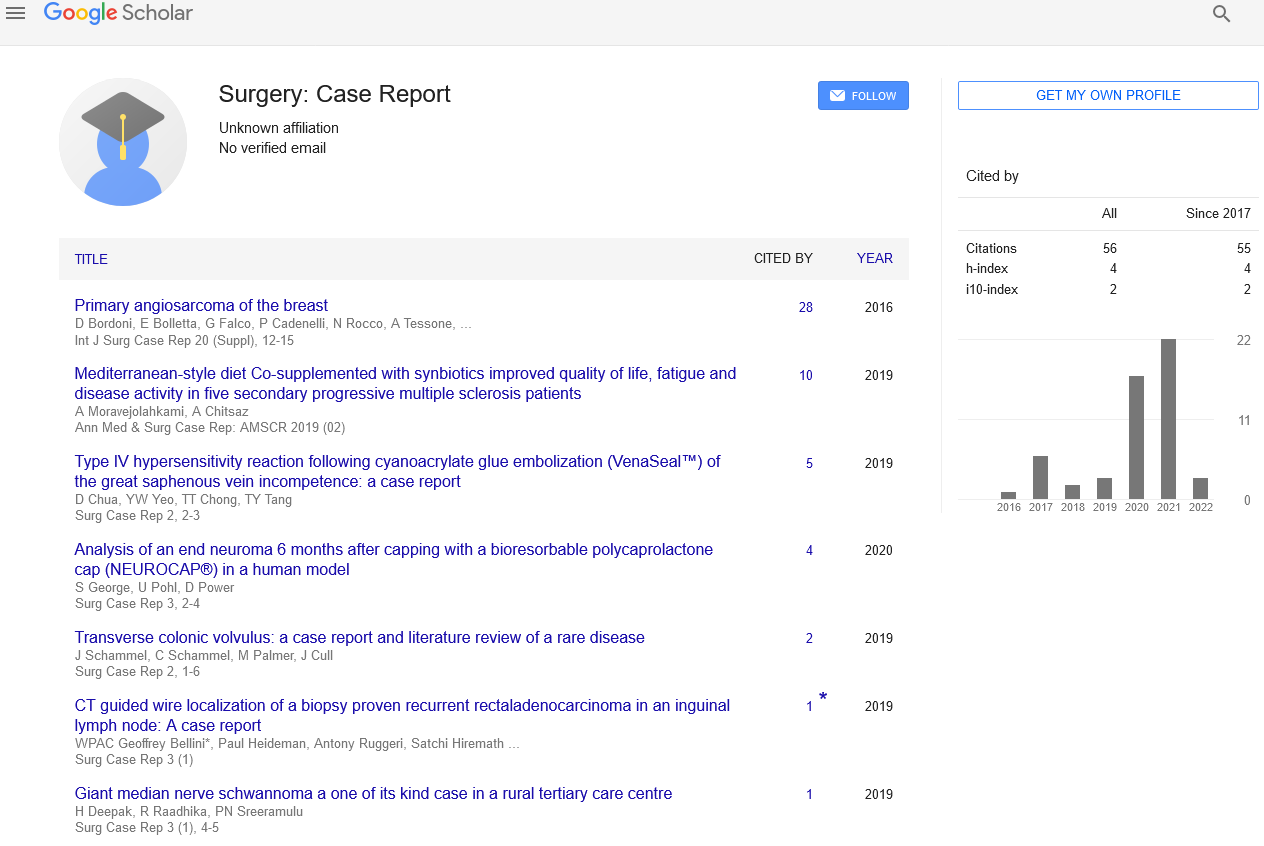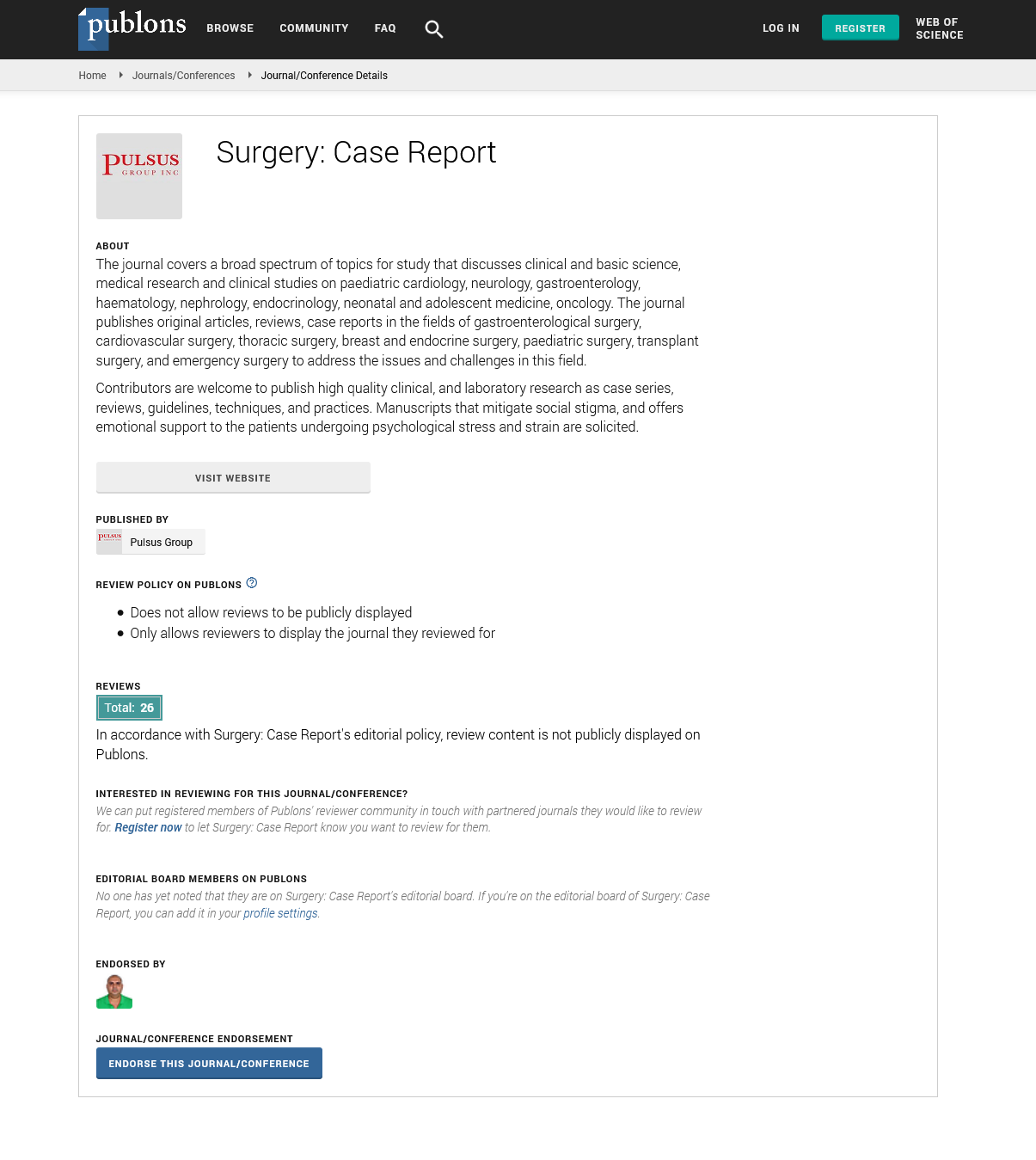Editorial Note for Significant Advancements in the Field of Case Studies
Received: 06-Jul-2020 Accepted Date: Jul 23, 2020; Published: 30-Jul-2020
Citation: Neelima K. Editorial Note for Significant Advancements in the Field of Case Studies. Surg Case Rep 2020;4:2. 2-2.
This open-access article is distributed under the terms of the Creative Commons Attribution Non-Commercial License (CC BY-NC) (http://creativecommons.org/licenses/by-nc/4.0/), which permits reuse, distribution and reproduction of the article, provided that the original work is properly cited and the reuse is restricted to noncommercial purposes. For commercial reuse, contact reprints@pulsus.com
Editorial
Journal of Surgical Case Report commemorates its decade long service to the scientific community by consistently publishing peer-reviewed articles and tracking the progress and significant advancements in the field of case study. Ever since its inception in the year 2010, in addition to regular issue releases on a quarterly basis, this transdisciplinary journal is also releasing special issues and conference proceedings from time to time, thus comprehensively covering a wide range of topics and emerging challenges in case study. The journal focuses on gastroenterological surgery, cardiovascular surgery, thoracic surgery, breast and endocrine surgery, paediatric surgery, transplant surgery, and emergency surgery. In this issue some of the recent and impactful research articles that were published by the journal will be discussed.
As per the case report of laparoscopic management of bilateral irreducible Amyand’s herniae in an infant, Sandesh et al. [1] reported their research work wherein, they have taken a 3 months old baby boy and had present to us with bilateral irreducible inguinal herniae. But later the herniae got clinically reduced during the manual reduction. The diagnostic laparoscopy showed a widely open left deep inguinal ring with edematous margins and no contents.
Where as to the right side, the proximal half of the appendix was seen entering the hernia sac and the distal half was adherent with the sac, preventing its repositioning to right iliac fossa. The appendix was carefully dissected from the sac using a 3-mm monopolar hook cautery followed by its reposition into the abdomen. Both deep inguinal rings were closed by intracorporeal knotting using polyethylene 3-0 suture on 16 mm cutting needle. Postoperative course was uneventful. The patient is asymptomatic at 6 months follow-up postoperatively. In the present case, laparoscopy not only allowed simultaneous bilateral hernia repair but also allowed inspection of the bowel along with incidental diagnosis and management of Amyand’s hernia.
In order to check the CT guided wire localization of a biopsy proven recurrent rectal adenocarcinoma in an inguinal lymph node, Bellini et al. [2] had taken a patient with recurrent very distal rectal adenocarcinoma metastasized to a right inguinal LN who underwent wire localization under CT scan guidance just prior to surgical excision and inguinal node dissection. We adjusted our incision to ensure not only the LN of interest was easily found and excised but also aesthetic closure based on its location. The node of interest proved to be recurrent metastatic rectal adenocarcinoma (proven preoperatively by a needle biopsy with clip placement to facilitate localization). We believe this technique to be useful for both localizing groin LN and allowing for optimal aesthetic closure.
These research articles published by the journal have immense relevance and significance in to check the laparoscopic management of bilateral irreducible Amyand’s herniae in an infant and to check the CT guided wire localization of a biopsy proven recurrent rectal adenocarcinoma in an inguinal lymph node.
REFERENCES
- Sandesh VP, Rahul KG, Beejal S, et al. Laparoscopic management of bilateral irreducible Amyand’s herniae in an infant. Surg Case Rep. 2019;3(1):6-7.
- Bellini G, Heideman P, Ruggeri A, et al. CT guided wire localization of a biopsy proven recurrent rectal adenocarcinoma in an inguinal lymph node: A case report. Surg Case Rep. 2019;3(1):8-9.






